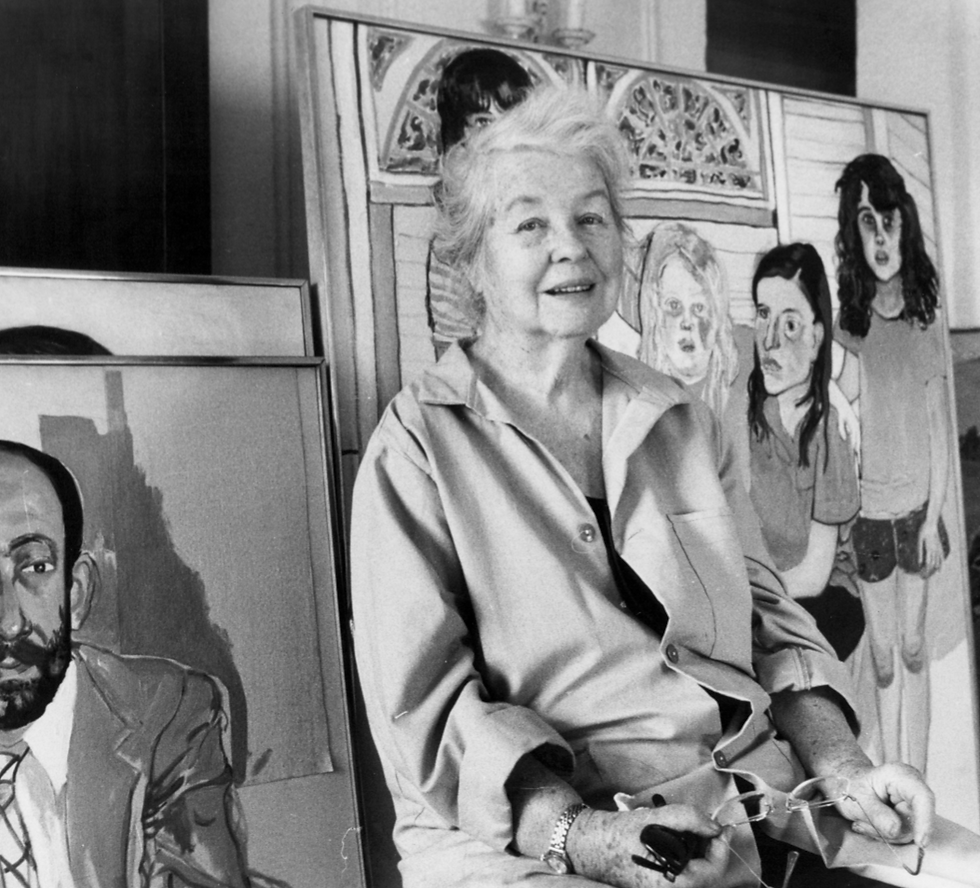Studios of Inspiration: Alice Neel
- Tiana Traffas Art

- Sep 10, 2023
- 3 min read

I kicked off this series with a tour of Tove Jonsson's incredible studio. This time, I wanted to get into the space of one of my all-time favorite artists!
I have a fierce love for the painter Alice Neel. Each painting is an arrow through the heart. She had an uncanny ability to capture a soul through portraiture, to reveal truths, to bring humanity to those on the outskirts. Plus, she was a fucking badass. One of the most radical things I've ever seen is her self-portrait she painted at age 82. She painted it in 1980. (I still get squirmy discomfort from people who see my figurative work in 2023!)
Alice Neel is the ultimate rebel, working in figuration at the height of abstration. She would not abandon her art during times of great personal and maternal strife. She had many lovers. She pained her subjects through the female gaze and flipped the script by objectifyed men rather than women.

Alice had a tough life but she lived it to the fullest. She came from a conventional family who upheld the statue quo, as many defiant boundary pushers do. Her mother once told her "I don't know what you expect to do in the world, you're only a girl." Neel had little to no exposure to art yet that was her dream from girlhood.
Even during her time in art and design school she wasn't jumping on the artistic trends, always doing her own thing and carving her own path.
In 1925 she married Carlos Enríquz, a Cuban artist, and moved with him to Havana. It was there, among the artists, writers, and musicians that she developed the foundations of her lifelong political consciousness and commitment to equality. In 1926 her first child was born. The couple moved to New York a year later and their daughter died of diptheria. The trauma and grief informed her work. Themes of motherhood, loss, and anxiety were apart of her work for the entirety of her career. Shortly following Santillana's death, Neel became pregnant with her second child. In 1928 her daughter Isabetta was born. (see the painting below that her birth inspired. Neel, if you haven't caught on yet, was put off by limited mothering archytypes.)

In the spring of 1930, Carlos had given the impression that he was going overseas to look for a place to live in Paris. Instead, he returned to Cuba, taking Isabetta with him. Alice had a mental breakdown, attempted suicide, and was briefly institutionalized. She never got to have a relationship with her daughter. Carlos and his family made sure of it. This was something that haunted her for the rest of her life.
During the depression of the 1930's she participated in government art programs that supported artists through weekly pay and pubic art projects. She started to gain traction in the art scene. At this time she made a lot of sexual and subversive work. She then began painting the female nude as it had never been depicted before. Taking it back from all the male painters that came before her, she gave them power and identities, no longer portraying women as idealized sexual object.

Neel became a mother to two boys who lived with her among the paintings in the living room and the models sitting before her for hours. When asked why she began painting pregnant nudes in the 60's she said, "It isn't what appeals to me, it's just a fact of life. It's a very important part of life and it was neglected. I feel as a subject it's perfectly legitimate, and people out of a false modesty, or being sissies, never show it, but it is a basic fact of life. Also, plastically, it is very exciting ... I think its part of the human experience. Something that primitives did, but modern painters have shied away from because women were always done as sexual objects. A pregnant woman has a claim staked out; she is not for sale."







She painted mothers and outsiders with a fierce truth, an ability to psychology capture them in emotional intensity. She was able to see their strength, pain, fears and depict it with respect while also fighting the current patronizing way motherhood was viewed at the time. She considered herself "a collector of souls" and depicted a wide range of humans: covering upper to poor class, a multitude of races, ages, genders, and sexual identities.
She challenged the social norms of what was acceptable to be depicted in art. Her self-portrait was one of her last works before she died in 1984.

What I love about Alice Neel's studio is that it is just an easel in her living room. It isn't some inaccessible grand studio. Great art can come from anywhere. She made fierce work among her children, lovers, and neighbors.





Comments